New England covered bridges have a touch of the past. They spread charm that brings back memories. One almost expects that instead of the cars and bicycles that pass them, horse-drawn carriages bump over their wooden planks. The covered bridges of New England. Covered bridges are one of the attractions that make New England unique.
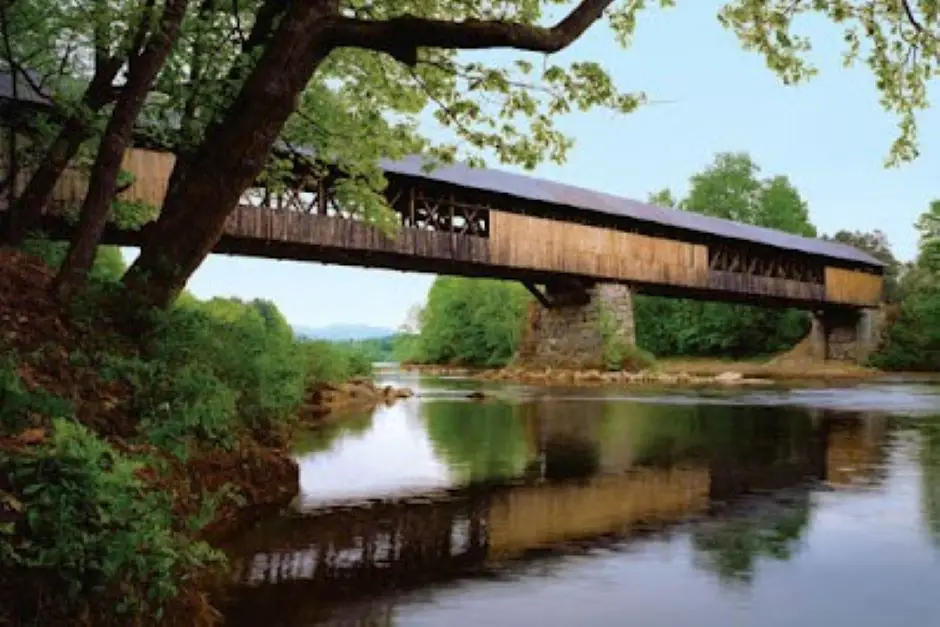
Where can I find the Covered Bridges in New England?
It is unclear why the New England bridges were covered with wood and provided with a roof. There are explanations for this that vary. Some say the reason is the winters in the states of Connecticut, Rhode Island, Massachusetts, Maine, New Hampshire or Vermont. To protect the carriages from the dangers of ice bridges, they were covered to protect them from the elements and unpredictable weather of New England winters. Another explanation is more prosaic and unflattering. Because they remind the viewer of stables, animals that were used to them crossed them without any problems. What's more romantic is the fact that they were in the past - and maybe today too, who knows? – were used by lovers to kiss, protected from the curiosity of others.
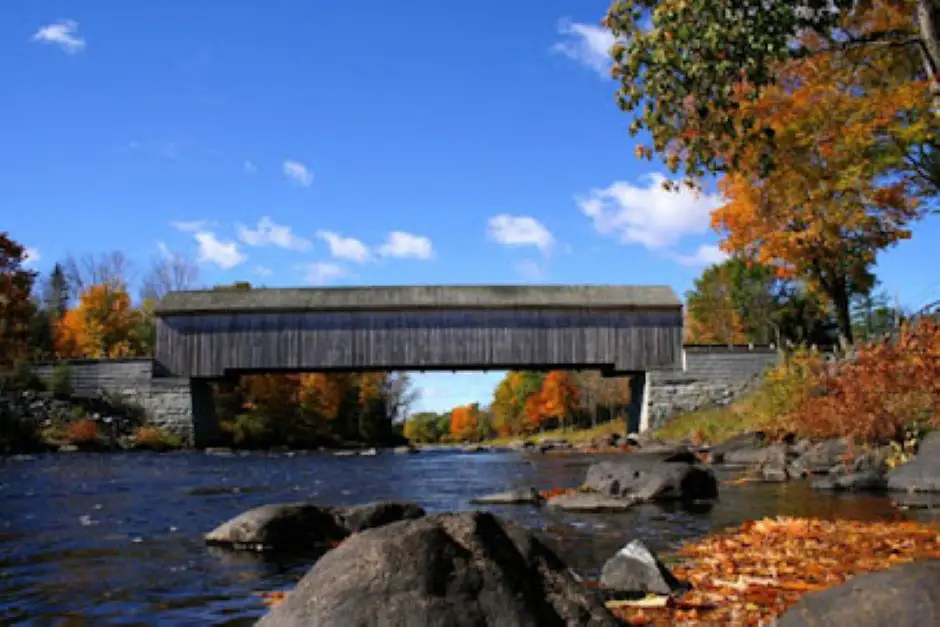
Bridge shapes
Their shapes vary greatly from bridge to bridge. Some are closed. Others have a wooden grille that allows some daylight to pass under the bridge roof. They are painted in all colors from red to white to brown. They look particularly beautiful Indian Summer when the deciduous trees in the area turn into the colors of autumn. Then the bridge colors compete with a fireworks display of foliage colors.
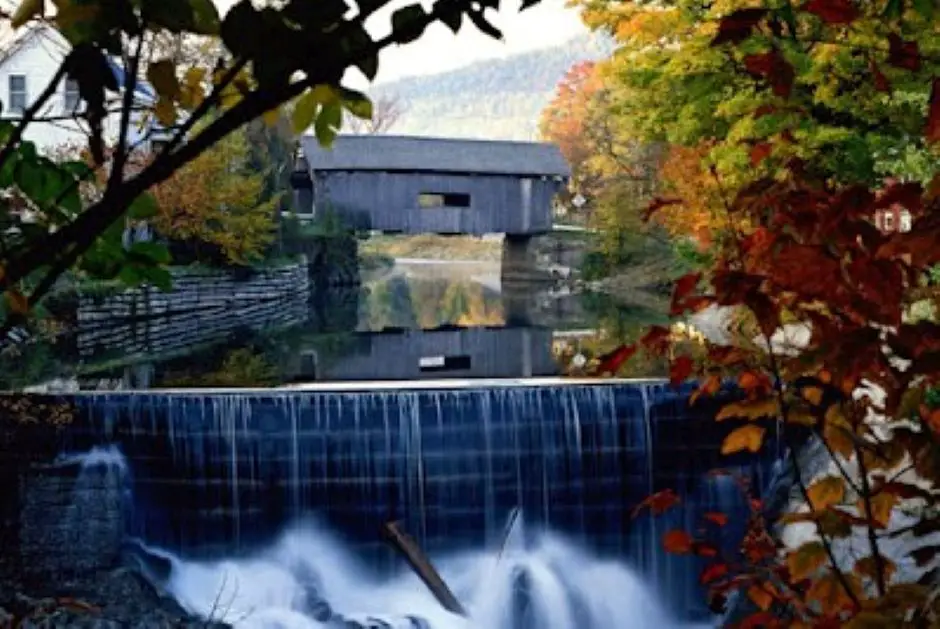
The Vermont Covered Bridge Museum in Bennington
If you want to find out more about the history and architecture of the bridges, you should visit the Vermont Covered Bridge Museum in Bennington. In the Center for the Arts you can watch drawings and films about the bridge structures in the region. There you learn, among other things, that the red paint was often used to paint the bridges because it was particularly inexpensive. You simply mixed them together from buttermilk, lime, flax oil, turpentine and ocher yourself.
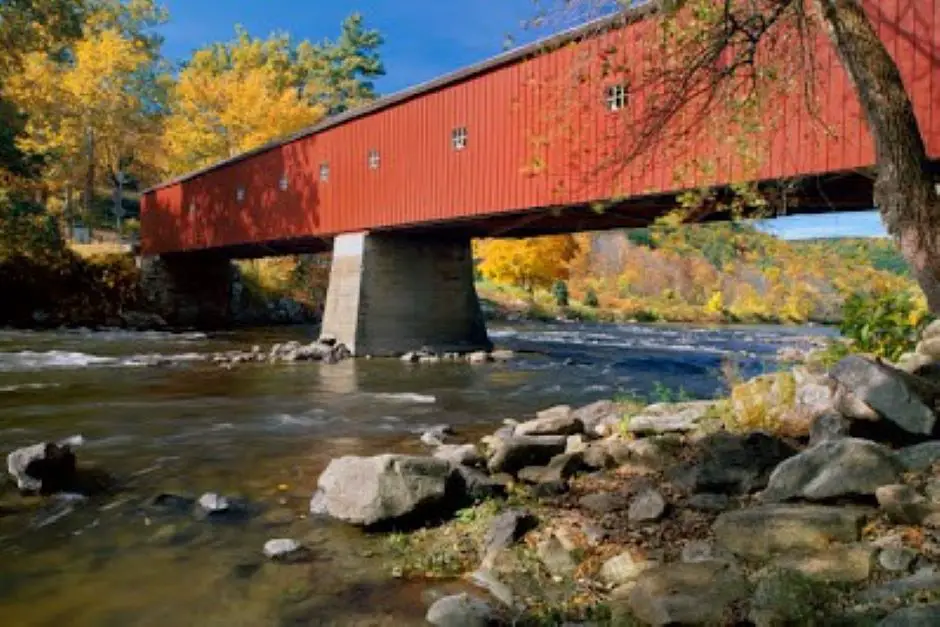
Where to find Covered Bridges in New England
Covered bridges can be found in every New England state: Vermont has 106 of them. There are 54 in New Hampshire and nine of the wooden beauties in Maine. Specimens can also be found in Connecticut, Massachusetts and Rhode Island. However, these are often not easy to find as they are usually not on the main thoroughfares. Therefore, it is a good idea to find out where you are along the route for the New England tour before you travel.
Do you like to travel by motorhome?
- Do you want to rent a motorhome? Then you will find information and a selection in these booking options.
- Check our packing list for campers to see whether you have packed everything for your motorhome tour.
- For example, there is a nice RV parking space near Bennington here: Dorset RV Park, 1567 Route 30, Dorset, VT 05251, United States
- You want to know where you can stay overnight in New England and New York * can and are you looking for pitches and campsites? You can find information about this under this link.
If you purchase via a link marked *, we receive a commission, which we use to run this blog.
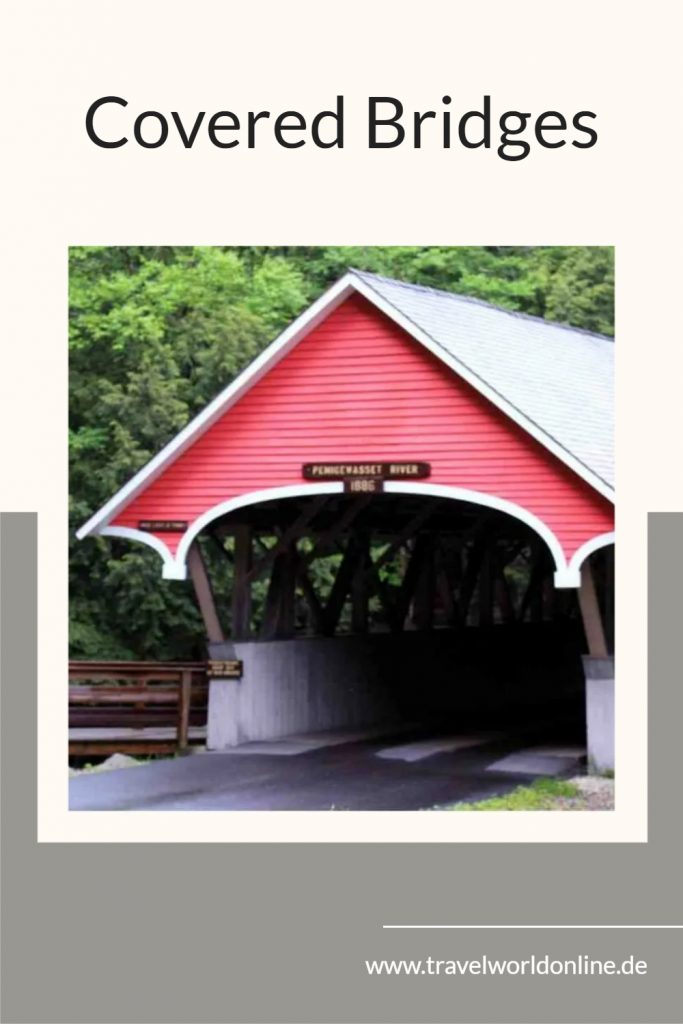
Do you know this?
- Free things to do in Boston
- Stowe Vermont USA - 3 tips for a day
- Trapp Family - The True Story
- Glass factory in Vermont with a covered bridge
- Green Mountain Villages in Vermont, New England
- Luxury lodge on a lake in New Hampshire, New England
- 10 Viewpoints on the Golden Gate Bridge
- Blue Ridge Mountains
- Ottawa Winterlude
- Ottawa Winterlude hotels
Sources: On-site research and with support from Discover New England. However, our opinions remain our own.
Text: © Copyright Monika Fuchs and TravelWorldOnline
Photos: © Copyright s. Image texts for the individual photos



